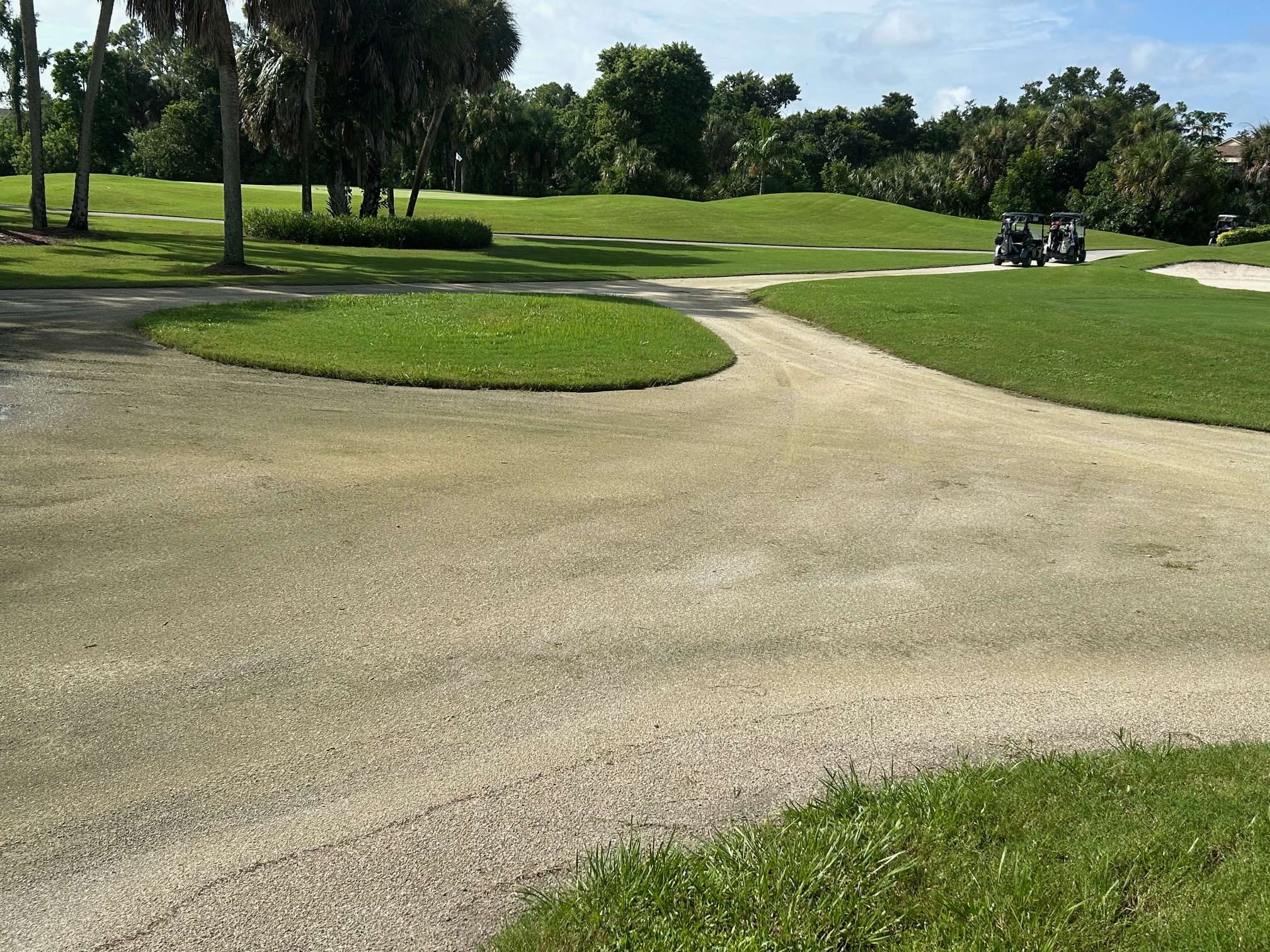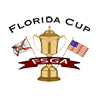Written by: Darin Green, Senior Director of Rules & Competitions
In Florida it is very common for courses to have cart paths made from substances other than concrete or asphalt. Due to the abundance of shells and coquina (rock limestone made up of fragments of mollusks and other sea animals), many courses used crushed shell or crushed coquina mixed with some sand to surface their cart paths. Additionally, courses use those substances in other areas of the course for various reasons. They may want to remove turf so save on maintenance costs, or to serve as a waste area, or for scenic reasons. While the surfaces are normally fairly hard, players can usually play off them with ease (might scratch the bottom of the clubhead).
A typical question we are asked, are players are entitled to free relief from those areas just like a normal concrete or asphalt cart paths. The answer is a little tricky and depends on the course you are playing. Below is explanation of how different type of paths are normally played.
Sand, Pine Straw & Dirt Paths
Cart and walking paths that are just sand, pine straw and dirt paths are not obstructions; hence, no free relief. The Committee could make a Local Rule that defines those paths as obstructions; however, it is not a common practice. A good example is Pinehurst #2 where nearly all of the paths are sand and they are played as part of the general area and not obstructions (no free relief). If you hit your ball on a path at Pinehurst #2, there is a decent chance your ball may lie on, in, or near a tire track or footprint. In those situations, I like to say “bad luck starts somewhere, play hard.”
 Crushed Shell & Coquina Paths
Crushed Shell & Coquina Paths
It can be argued that crushed shell and crushed coquina paths are obstructions because the path is surfaced with an artificial substance (humans crushed the substances and made a path out of them). However, this can be debated. So, the Committee should define how these areas are to be played: obstruction (free relief) or integral part of the course (no free relief). The way the Committee defines these areas are normally listed on the scorecard, posted in the clubhouse, or written on a Local Rules sheet.
How Does the FSGA Normally Play Crushed Shell & Coquina Paths?
It varies and depends on several factors. First, we see how the host clubs plays them and if the host club cares how we play them. Second, are the edges of the paths well defined; meaning, are there clear defined edges to the paths everywhere on the course? Third, are the areas just meant to be cart paths or are some areas larger and designed to be played from? Lastly, what do we think the intent of the designer was.
If all of the paths on the course are like the first picture to the right, then we would normally declare them as obstructions and grant free relief because the paths are just like concrete or asphalt paths and the edges are very well defined.
I f the course has areas like the second picture to the right, then we would normally declare all of those areas, including the paths, as integral parts of the course (no free relief).
f the course has areas like the second picture to the right, then we would normally declare all of those areas, including the paths, as integral parts of the course (no free relief).
Ultimately, the final decision lays in the hands of the Committee.





